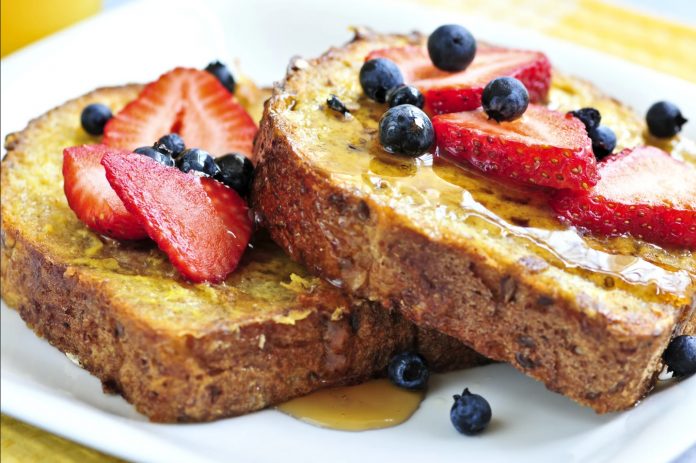It was, in fact, a method for using stale bread; both to make it tasteful and to abstain from squandering nourishment, an inconceivable represent the penurious laborers of the time. Notwithstanding, the princely expended it too, though embellished by progressively unrestrained and costly fixings.
French toast or some variety thereof is devoured the world over. For some it is a treat; for others, an occasion most loved, for example, on Christmas or Easter.
It is very common to eat french toast in breakfast. The reason is it won’t consume much time.
Grab a toast and you are sorted out for morning meal!
The history of French toast is not so much clear,
It was classified “French toast,” comparative plans were being prepared all around the globe. Perhaps the most punctual rendition of French toast has been followed back to the Roman Empire.
Definition: Bread normally dunked in a player of egg and milk and sautéed until dark-colored, for the most part, presented with syrup or sprinkled sugar and cinnamon.
Throughout the hundreds of years, French toast has been called everything from Spanish toast to egg toast to Nun’s toast.
In the same way as other different foods, French toast can be followed back to the Ancient Romans. They would absorb bread milk (some of the time egg) and fry it in oil or margarine.
French toast was devoured by workers all through Europe as an approach to make stale bread a palatable food thing.
During the 1400s during the rule of Henry V, an adaptation of French toast called torment perdu, or lost bread, was prevalent in the culinary world.
French toast was classified “lost bread,” potentially as a source of perspective to sparing bread that would some way or another is disposed of as excessively stale.
The fact is that it hasn’t been demonstrated, there is a legend that an Albany, New York owner, Joseph French, is credited with naming French toast – coincidentally.
Allegedly, he served French toast in 1724. He publicized the dish as “French toast” since he did exclude the fitting punctuation to title it, “French’s toast.”
Today, French toast stays a well-known food thing for breakfast or as a treat.
As the history tells, French toast is reasonable for an entire scope of individuals – from the well off, to the not really affluent; it tends to be fundamental or liked up to tailor a progressively detailed or modern sense of taste.
The name “French toast” was first utilized in seventeenth-century England. The formula — and name — were brought to America by early pioneers.
Three secrets to eat French fries!
On the off chance that this is your concept of French toast flawlessness, our very own Chef John shares three insider tips to guarantee your next group will be your best yet.
1) Soak It.
Gourmet specialist John prepares a basic egg and milk custard seasoned with cinnamon and vanilla, at that point lets thick cuts of day-old bread absorb it until each cut is completely soaked.
2) Fry It.
Three minutes for each side in hot margarine seals the custardy covering onto the bread and gives it that eye-popping brilliant dark colored hull.
3) Bake It.
This is the progression you didn’t see coming. Culinary specialist John lays the French toast on a heating sheet and prepares it in a 400° F stove for 12 to 15 minutes. The warmth causes the custard-absorbed toast to puff wonderfully while it completes the process of cooking within.
Reward:
Everybody gets the opportunity to appreciate hot French toast simultaneously. On the off chance that you’ve at any point gone through an early daytime bouncing up from the table to watch out for the toast, you know how game-changing this is.





























